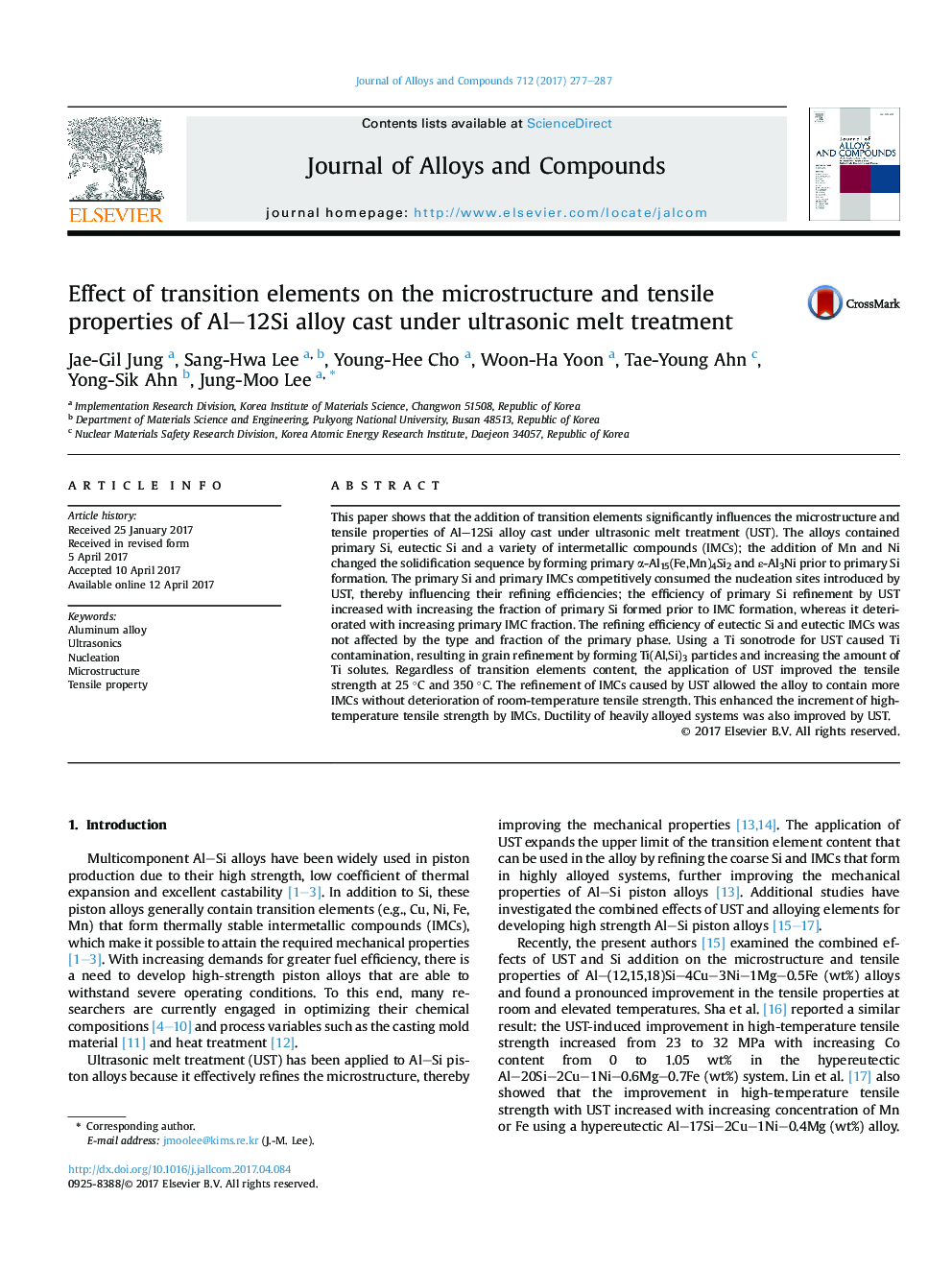| Article ID | Journal | Published Year | Pages | File Type |
|---|---|---|---|---|
| 5460433 | Journal of Alloys and Compounds | 2017 | 11 Pages |
Abstract
This paper shows that the addition of transition elements significantly influences the microstructure and tensile properties of Al-12Si alloy cast under ultrasonic melt treatment (UST). The alloys contained primary Si, eutectic Si and a variety of intermetallic compounds (IMCs); the addition of Mn and Ni changed the solidification sequence by forming primary α-Al15(Fe,Mn)4Si2 and ε-Al3Ni prior to primary Si formation. The primary Si and primary IMCs competitively consumed the nucleation sites introduced by UST, thereby influencing their refining efficiencies; the efficiency of primary Si refinement by UST increased with increasing the fraction of primary Si formed prior to IMC formation, whereas it deteriorated with increasing primary IMC fraction. The refining efficiency of eutectic Si and eutectic IMCs was not affected by the type and fraction of the primary phase. Using a Ti sonotrode for UST caused Ti contamination, resulting in grain refinement by forming Ti(Al,Si)3 particles and increasing the amount of Ti solutes. Regardless of transition elements content, the application of UST improved the tensile strength at 25 °C and 350 °C. The refinement of IMCs caused by UST allowed the alloy to contain more IMCs without deterioration of room-temperature tensile strength. This enhanced the increment of high-temperature tensile strength by IMCs. Ductility of heavily alloyed systems was also improved by UST.
Related Topics
Physical Sciences and Engineering
Materials Science
Metals and Alloys
Authors
Jae-Gil Jung, Sang-Hwa Lee, Young-Hee Cho, Woon-Ha Yoon, Tae-Young Ahn, Yong-Sik Ahn, Jung-Moo Lee,
